‘I shouldn’t be here.’
That’s all I could think as I brought my camera to my eye to frame a shot overlooking the massive expanse of Dallas/Fort Worth International Airport. I was in a Robinson R44 Raven II helicopter, the door removed at my request. The sun had barely risen over the north Texas landscape as we approached what is typically one of the busiest airports in the world.
Normally, at our altitude and heading, air traffic control would urgently contact us with concern about our intentions. But this morning? Silence.
A quick transmission from our pilot to air traffic control was met with, ‘Approved as requested. Stay west of the tower and advise when leaving the field.’ The entire west half of DFW Airport was ours to explore.
Usually I’d be thrilled for this opportunity, but not today. The COVID-19 pandemic has functionally destroyed commercial aviation. Almost overnight air passenger demand plummeted 95%.
The jets are sitting stagnant in what are usually bustling airports, yet no one was covering these jets from an artistic perspective. So, I decided to. Two weeks. Six airports. More than 7,500 images captured. As a photographer I’m not only an artist, but a storyteller. These grounded jets tell not only a story, but one with an uncertain ending, and I wanted to use my cameras to find beauty in what is a devastating scene for those in the aviation industry.
American Airlines celebrated new flight attendant uniforms in early March but, just one month later, the airline was fighting for its very survival. Facing no choice, it joined its peers and parked jets around the country, including at its home base of Dallas/Fort Worth. Today, American Airlines jets were the reason the doors were off of the helicopter.
DFW wasn’t my first airport visit. It was my fourth. And yet, the sight of so many grounded planes still took my breath away. As the pilot and I worked together to find the perspectives I needed, I saw compositions of symmetry and negative space that were never possible before because the airport was so busy.
We flew out to the side of the line of aircraft and then directly over them.
What is normally an oft-used taxiway has become a parking lot. But not forever. These jets will fly again.
While my day at DFW Airport probably had the biggest impact on me during this project (it’s my home airport, after all), my first helicopter ride for this story actually took place just a few miles northwest over Fort Worth’s Alliance Airport.
When I heard Spirit Airlines began storing jets there, this concept and project weighed heavy on my heart. I knew I wanted to find something beautiful in all of this, so I chartered a helicopter and went up with a planespotting friend for a proof of concept. I was prepared to take pictures, but I wasn’t prepared for the gravity of these photos, even from a line of only eight aircraft.
There was symmetry. There was beauty.
The concept worked. It was a melancholy beauty, but it was still beautiful. I had to continue with this project, for no other reason than to honor the determination of these airlines. The world will recover and these jets will fly again.
American Airlines jets at its largest maintenance base
As I planned helicopter flights over other airports, I faced a bit of a transportation conundrum. Flight cancellations were running rampant across the country. I decided to make the trips by driving, fully embracing the irony of driving to airports in order to fly OVER them to photograph grounded planes meant to be in the air.
It seemed fitting fly over Tulsa International Airport to see American jets, as American’s Tulsa Maintenance Base is the largest maintenance base in the world. It mase sense for the aircraft to be placed there while American’s operation began to try and fix the carnage caused by Coronavirus. We approached from the south, with a welcome by air traffic controllers that almost felt eager for action.
I thought I was ready to see the sitting jets – I had handled seeing eight Spirit jets just fine – but I wasn’t ready for what I saw.
Jets were everywhere. Any spare space available was occupied by aircraft.
These weren’t just the little aircraft either. I was flying directly over a significant portion of American’s international widebody fleet.
I looked through my viewfinder and noticed the jets parked above skidmarks left by the tires of landing aircraft. It’s ironic how what is meant to be an active runway was now relegated to storage.
We made one more lap around the field and I noticed a row of Boeing 737 Max 8 aircraft grounded. How sad it was that the 787 and 777s next to them shared the same fate.
As we completed our final orbit over TUL, we heard a very uncommon request to air traffic control. A plane was actually departing! We were in perfect position to capture the American 737 as it took to the skies.
It was almost as if the departing 737 was meant to inspire its grounded sisters in the background, for these jets will fly again.
To the Desert of Arizona
This project isn’t just about American or Spirit. This crisis has affected every airline in the world, some of which will shut down forever. The desert was calling.
Tucson is a beautiful Arizona town surrounded by Saguaro cacti forests. It’s also quite a drive from Dallas. Nevertheless, my brother and I hopped in my Tesla and made our way across Texas and New Mexico (stopping along the way to take an epic picture of an art installation called Prada Marfa). We arrived tired and weary to Tucson.
As the evening sun descended towards the hilly horizon, I drove to the small community of Marana to catch another helicopter ride. This time I was joined by a great friend who I met on the Sony Kando Trip in Oregon last year. Our target? Pinal Airpark. Once a quiet, untowered landing strip and aircraft boneyard, it was now supposedly overflowing with aircraft.
I had to see for myself. How can a desert be full? It didn’t take long to find out.
I’ve never seen so many jets parked next to, and seemingly on top of, each other. The assorted JetBlue vertical stabilizer designs cast a blue line through a sea of jetliners. It was truly an amazing sight. The primary residents were JetBlue, Air Canada, and some Delta widebodies, not to mention the many retired Delta 747s sitting in the boneyard, a sad sight in its own right.
The angles and lines made it look as if the ground crews placed these jets specifically for photographers like me. Really, the jets are lined up as efficiently as possible, with mere feet separating a wing from a fuselage.
Air Canada jets littered the field, from a cavalcade of Air Canada Rogue jets to rows of grounded 737 Max 8s.
American, seemingly ever-present, had some of their regional aircraft placed at Pinal.
We gained some altitude and saw the true scale of the storage facility. I immediately answered my own question. If a desert could feel full, it was here in the filled airpark.
We made our way back to Marana, passing by another group of American Eagle aircraft, formerly owned by Compass and assumed by American Airlines. It was a gut punch, as a friend of mine flies these jets. I had to reel in my excitement of the photos I was capturing. These jets reminded me the gravity of this crisis.
As we landed amidst a desert sunset, I tried to reminded myself to stay positive. We will recover from this. These jets will fly again.
Delta Symmetry in Kansas City
Once back in Dallas, I hopped in my car and made my way north again. This time, past Tulsa and into Missouri. I skipped the hotel and slept during Tesla charging stops until I arrived at a small airfield in Excelsior Springs, Missouri, for my penultimate flight. My buddy Ryan, who is also one of the most talented planespotters on Instagram, was going to drive down and meet me so we could fly together over Kansas City. Sadly he came down with a dreadful case of food poisoning the night before, so I was on my own.
So, why Kansas City?
That’s why.
Eighty-six Delta jets arranged in one of the most stunning, symmetrical lines I’ve ever seen. Tulsa and Pinal took my breath away, but they had nothing on Kansas City.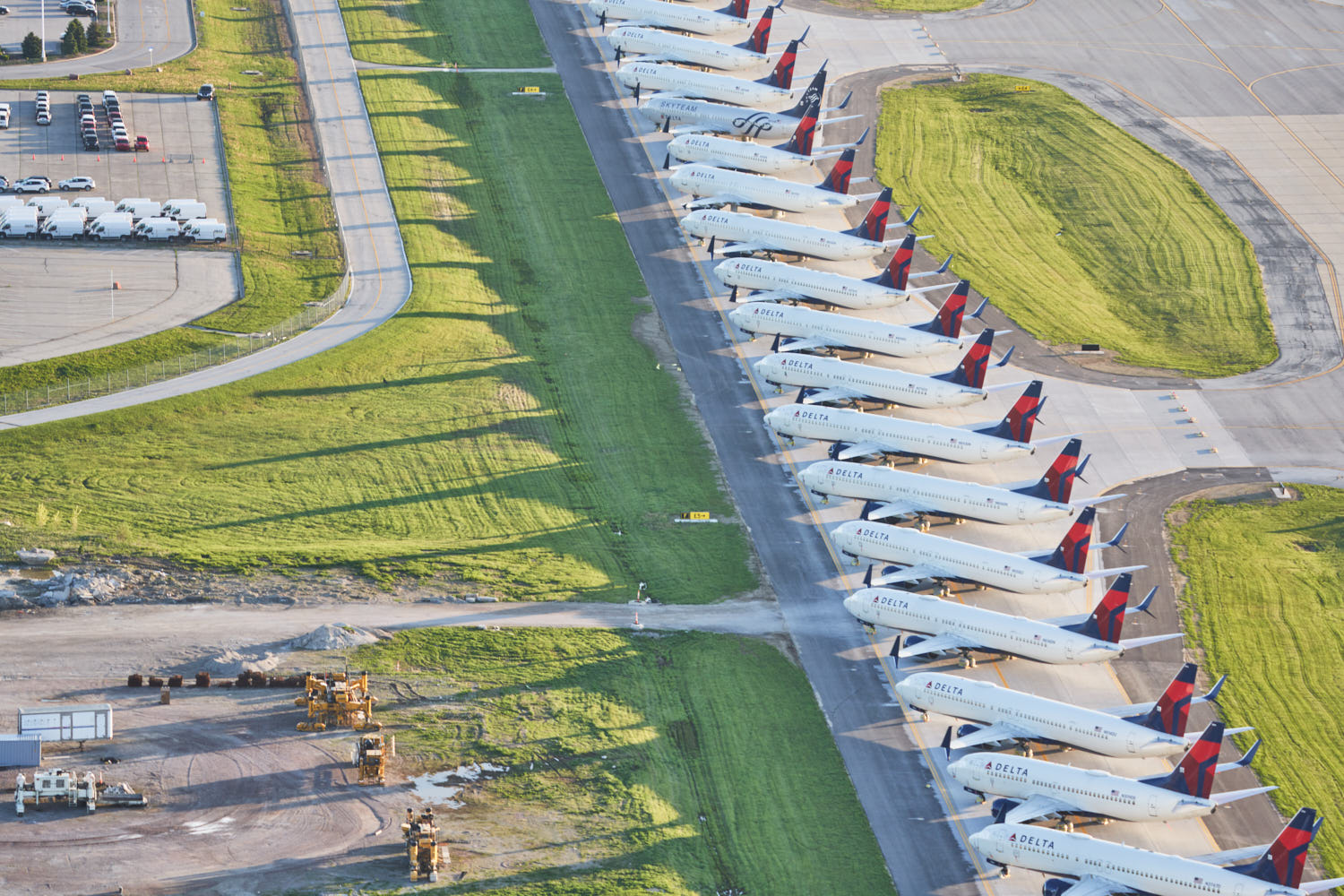
Every orbit we made around the field unveiled a new perspective of the jets. It would’ve been epic if it weren’t so sad. These jets should’ve been airborne, carrying 15,000 passengers to vacations, business meetings, and family reunions. Instead they sat silently, their windows taped off to prevent sun from damaging the cockpit.
We continued to gain altitude in search of a different perspective.
Delta jets weren’t the only ones on the ground. Air Canada made another appearance, with a group of 767s (whose permanent retirement, sadly, has since been announced).
Our final orbit around the field culminated in one of the most visually stunning and emotionally intense images of the entire project.
Years from now, these images will represent a dark history from which Delta has recovered. These jets will fly again.
The Final Flight
I had completed what I thought was my last flight and was driving back to Dallas when I received a text from my buddy Ryan who let me know United had begun storing jets at Bush Intercontinental in Houston. I didn’t have a choice. To Houston I went.
I picked up my mom for the trip to Houston, where we’d stay with relatives. My dear Uncle Mike was excited to be joining me for chartered flight.
Before the heat of the day could set in, we departed from West Houston Airport toward Bush Intercontinental. Air traffic control was as agreeable as ever, which still felt astonishing for how busy of an airport we were flying over. Then, off in the distance, I saw them.
What seemed like a small group of planes at first glance quickly grew into an entire taxiway of them.
At the end of the field we turned around for a look down the line. Old and new liveries. Large and small aircraft. They should’ve been in the air with us.
I always look back as we leave the field. The sun cast a beautiful light over these incredible machines as we eased back towards the west. I was glad I looked back. I was glad I came here.
It was an amazing two weeks. I drove 4,232 miles across six states, flew in six Robinson R44 Raven II helicopters, took 7500 pictures, and somehow was blessed with incredible weather the entire trip. I’m grateful for the chance to tell the story of these jets and the women and men who fly them.
After the 9/11 terrorist attacks, American Airlines CEO Don Carty famously said, “Airlines tear down walls, blur borders, and help erase ignorant stereotypes. We are the engine that powers the free flow of people, ideas, goods, hugs, fun, and love. Not only that, but we’re ambitious, we’re diverse and we’re strong. We can be unwieldy, we don’t always get along, but we band together when it counts. We are free, we are determined, and we are not afraid.”
There will be recovery. There will be renewal. And these jets will fly again.
Acknowledgments
I couldn’t have made this project happen without my friends at Epic Helicopters in Fort Worth, Texas. I’ve flown with them for five years now and they’ve never once hesitated when I come to them with crazy ideas. They put their heads down and figure out how to make it happen. Without their partnership over the years I wouldn’t have been prepared for a project like this.
Additionally, I can’t say thanks enough to the helicopter operators who flew a random dude from Dallas over random airports. I had a specific set of altitudes I needed to get to for each shot and they were all wonderful partners on our flights.
- FlyTulsaOK– Tulsa, Oklahoma
- Volare Helicopters– Tucson, Arizona
- Heartland Helicopters– Kansas City, Missouri
- National Helicopter Solutions– Houston, Texas
I’d also like to thank the countless friends and family who provided feedback along the way and guided my path on this project. I know the subject matter is hard to see but I think the end result was worth it.
MOST IMPORTANTLY: Thank you to the countless airline team members fighting through these tough times. My hope and prayers are for demand to come back quickly so I can see you in the skies again soon. You will fly again.
Please direct licensing inquiries to andy@lutencreative.com

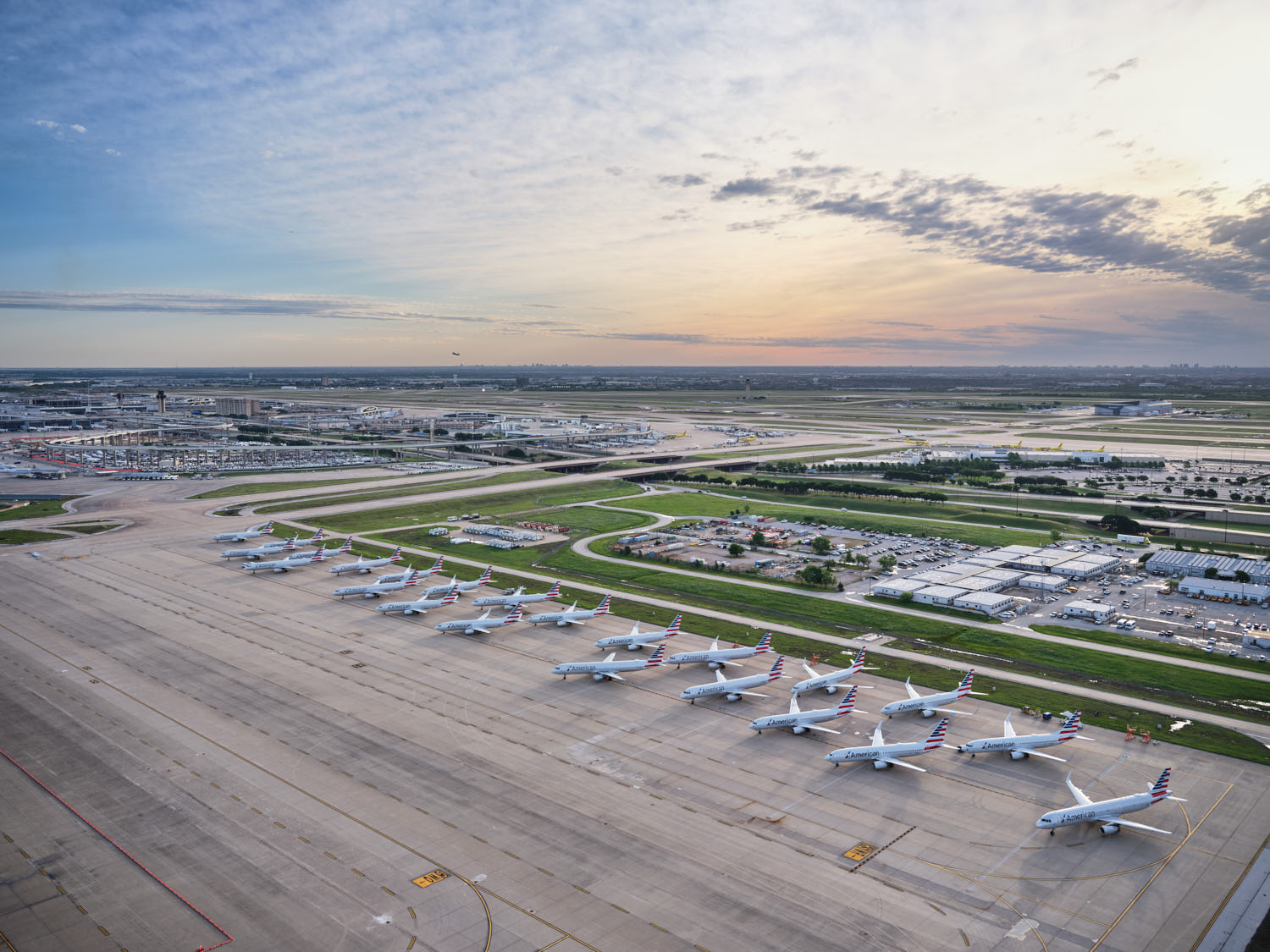



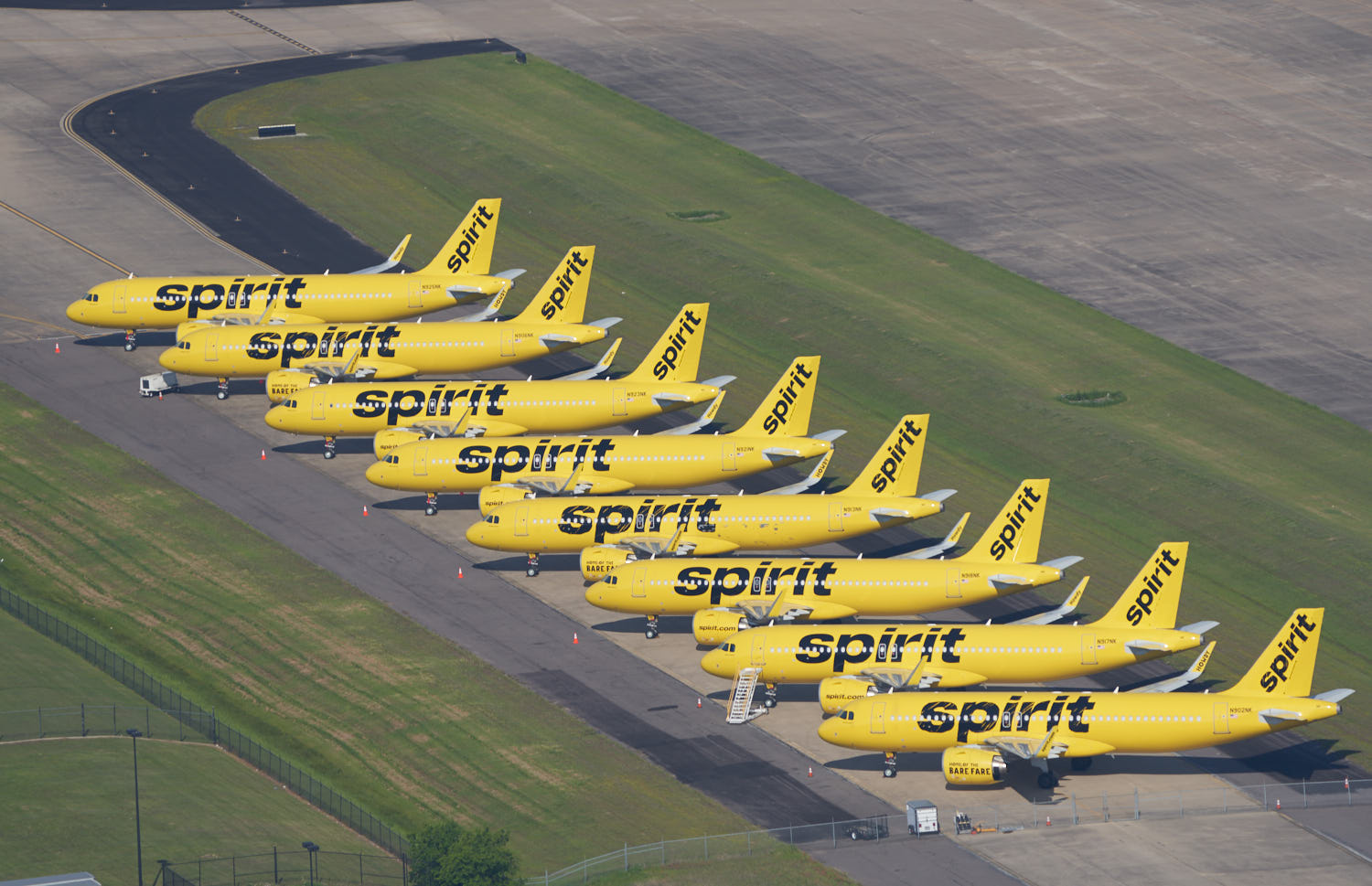
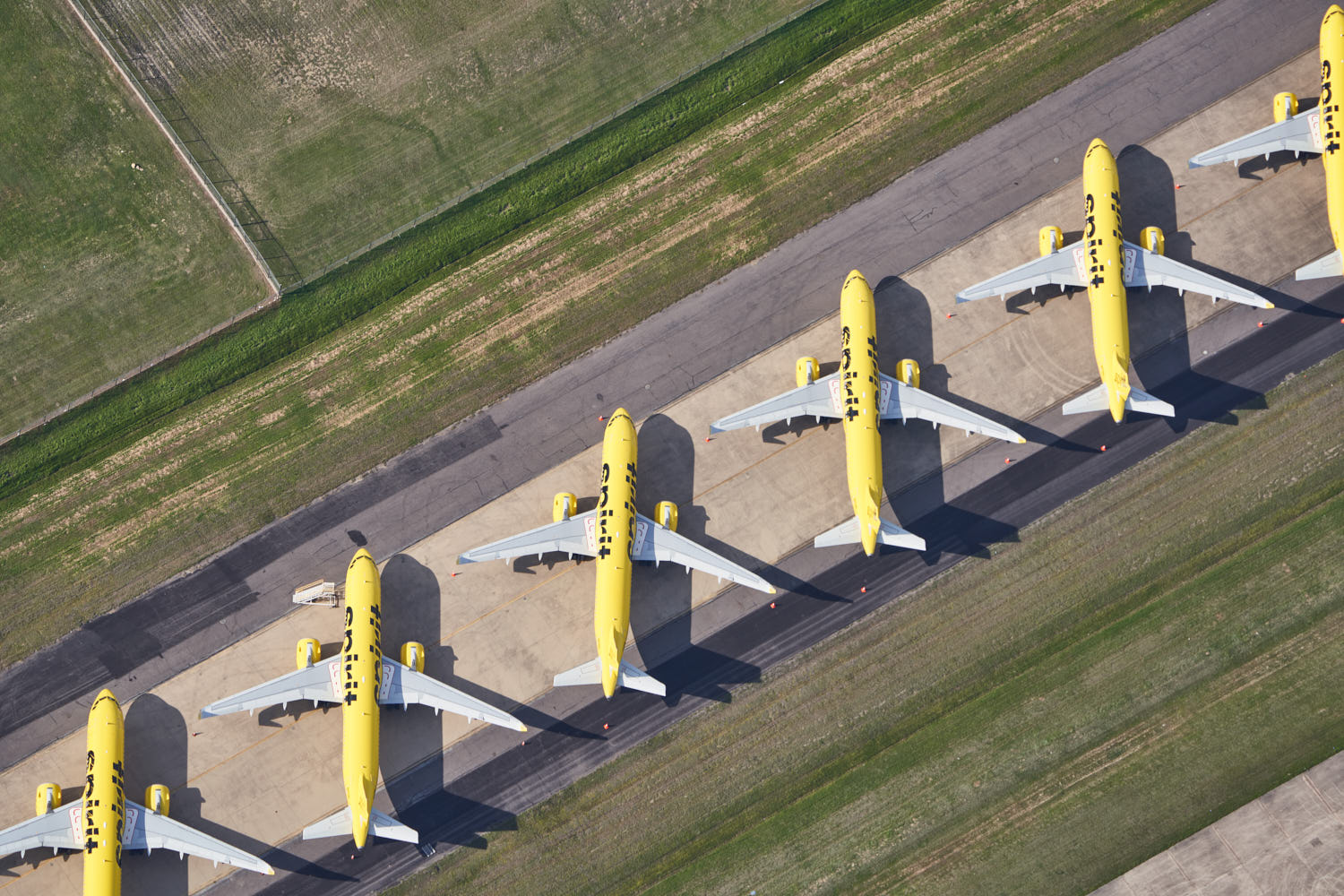
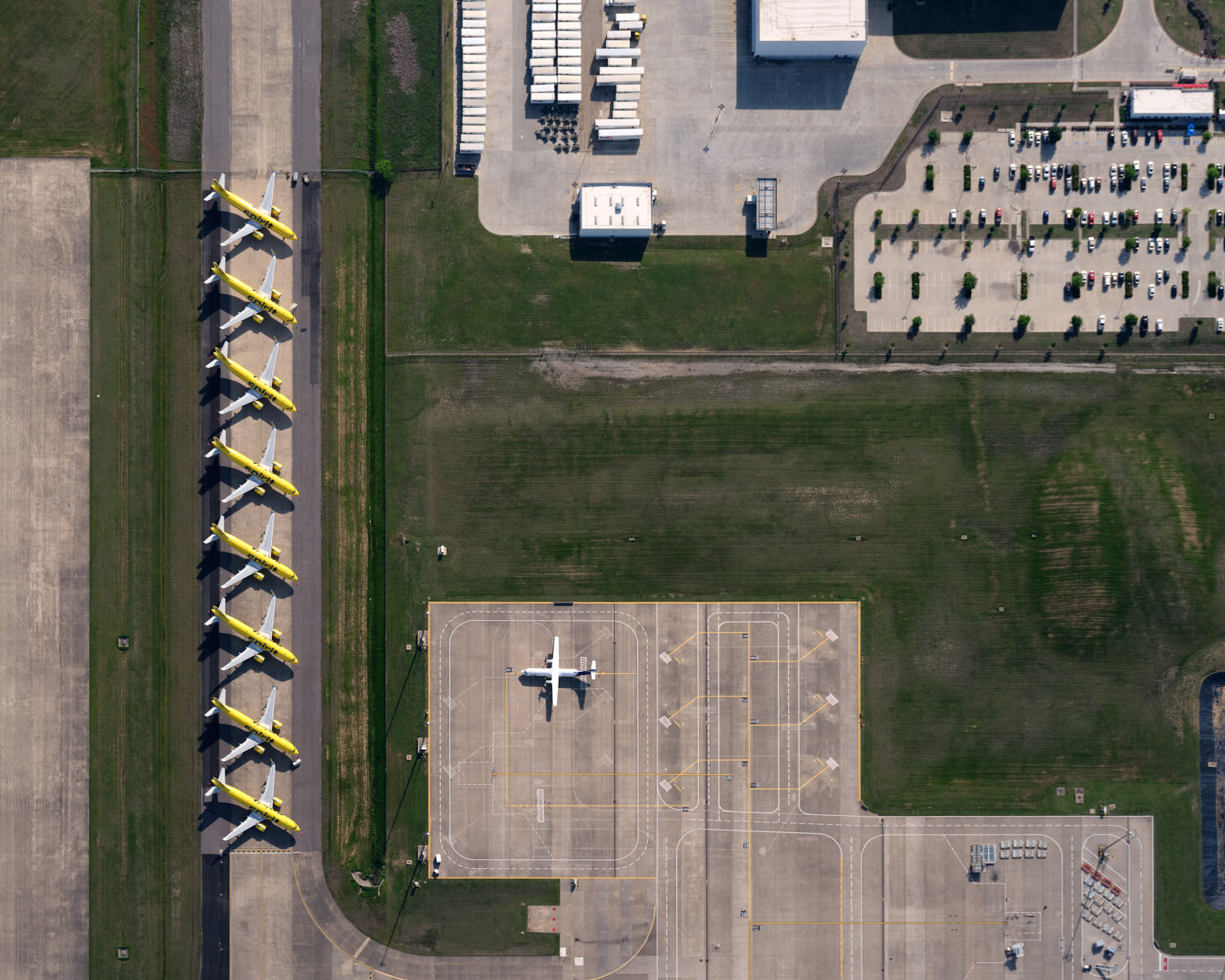

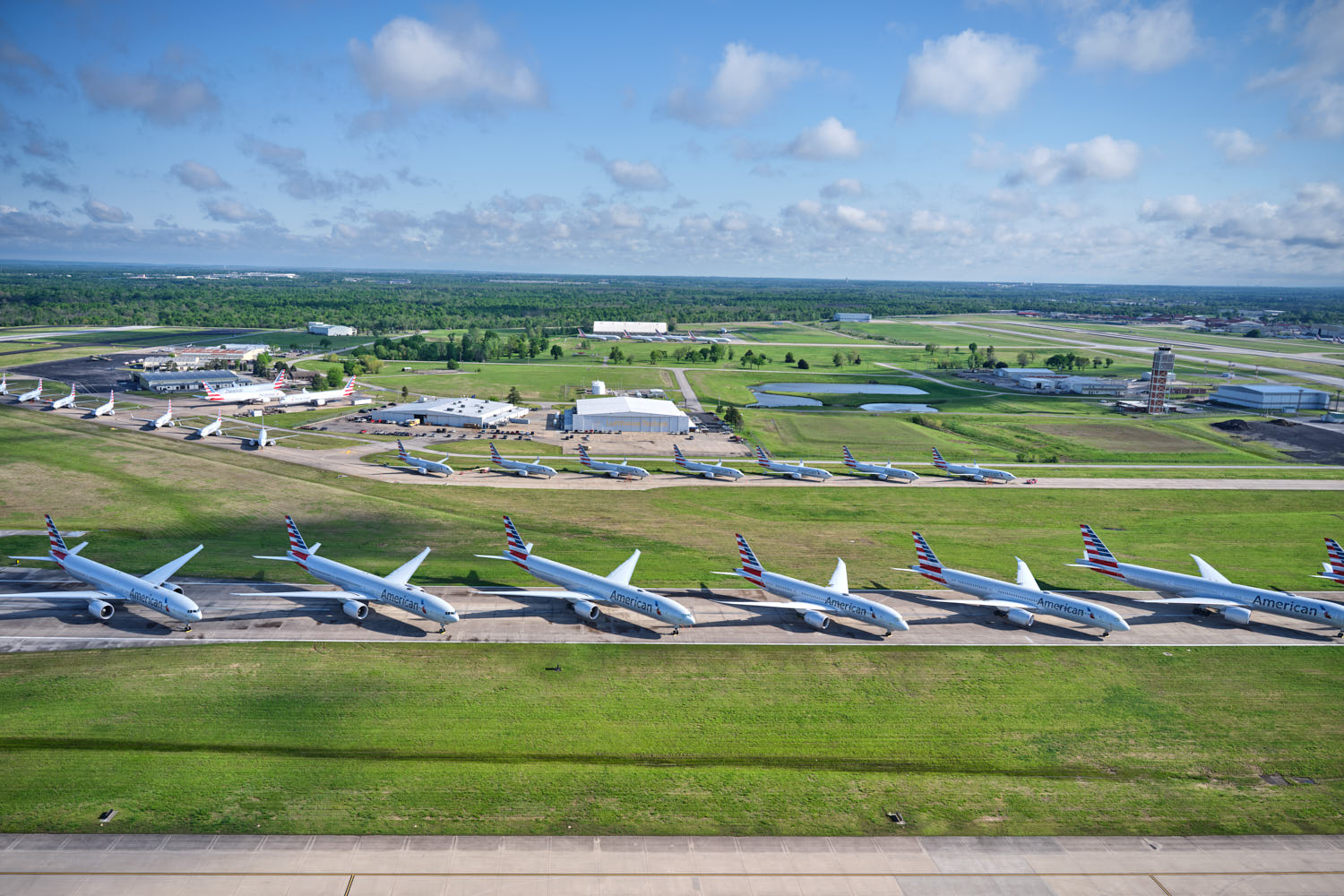


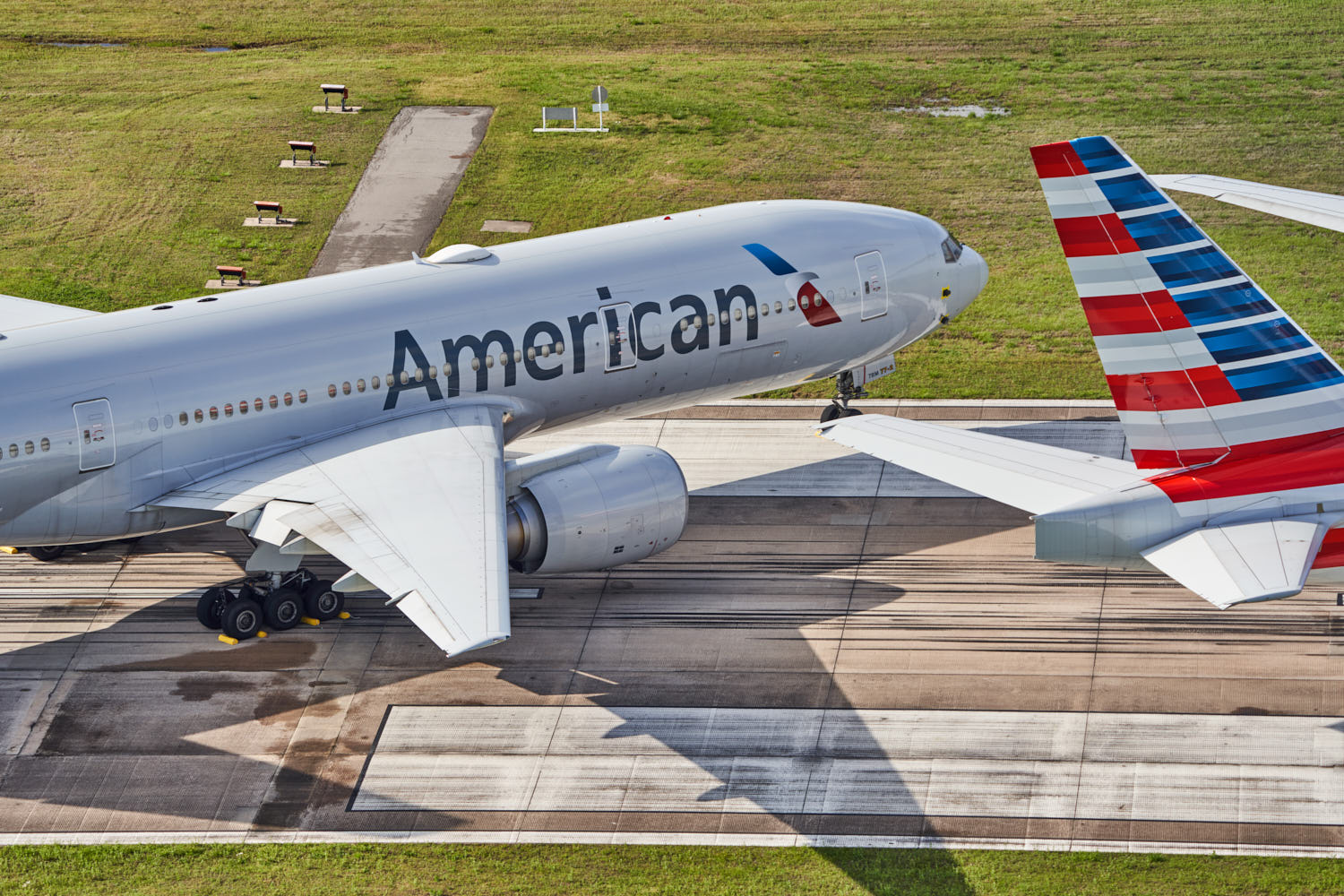
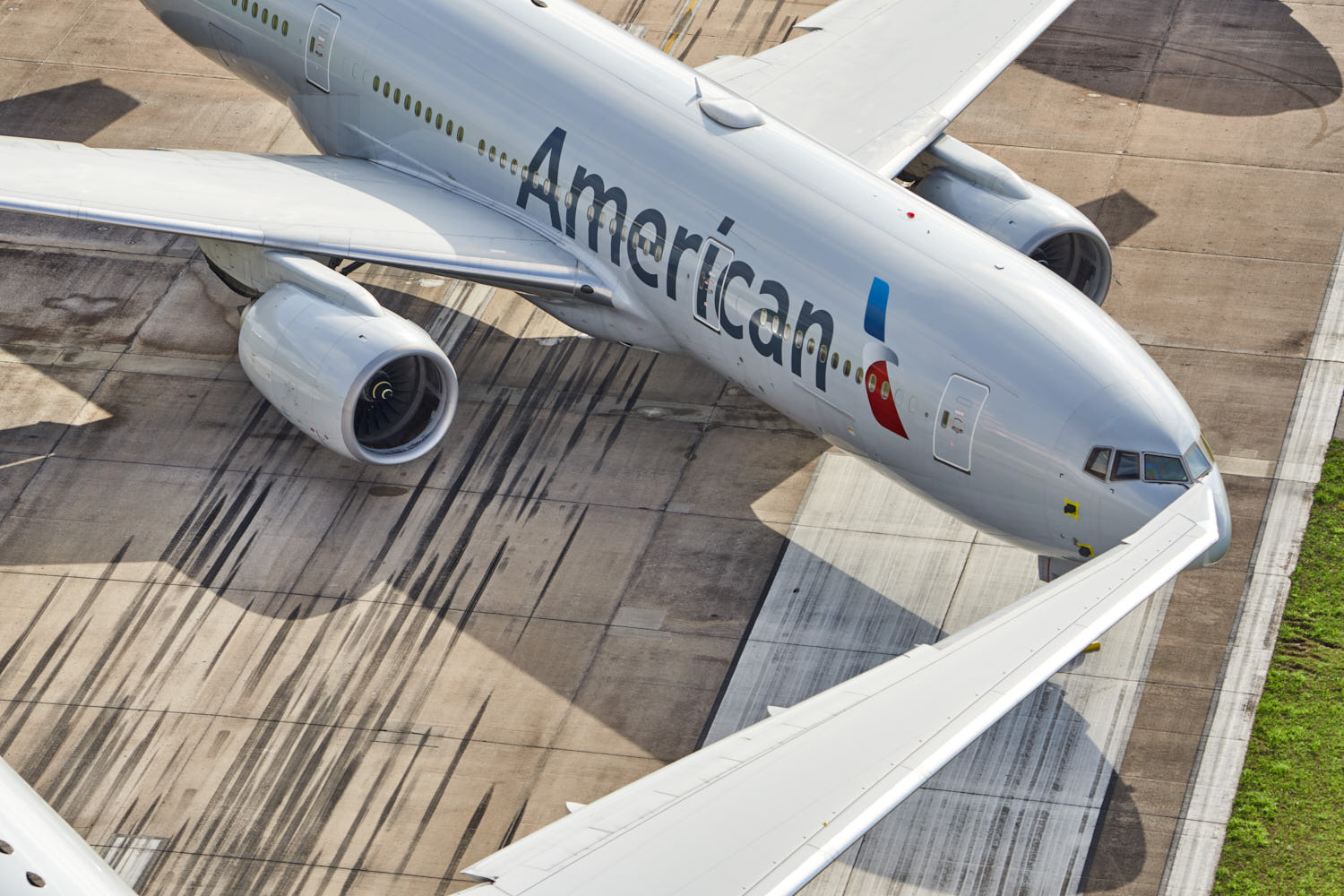
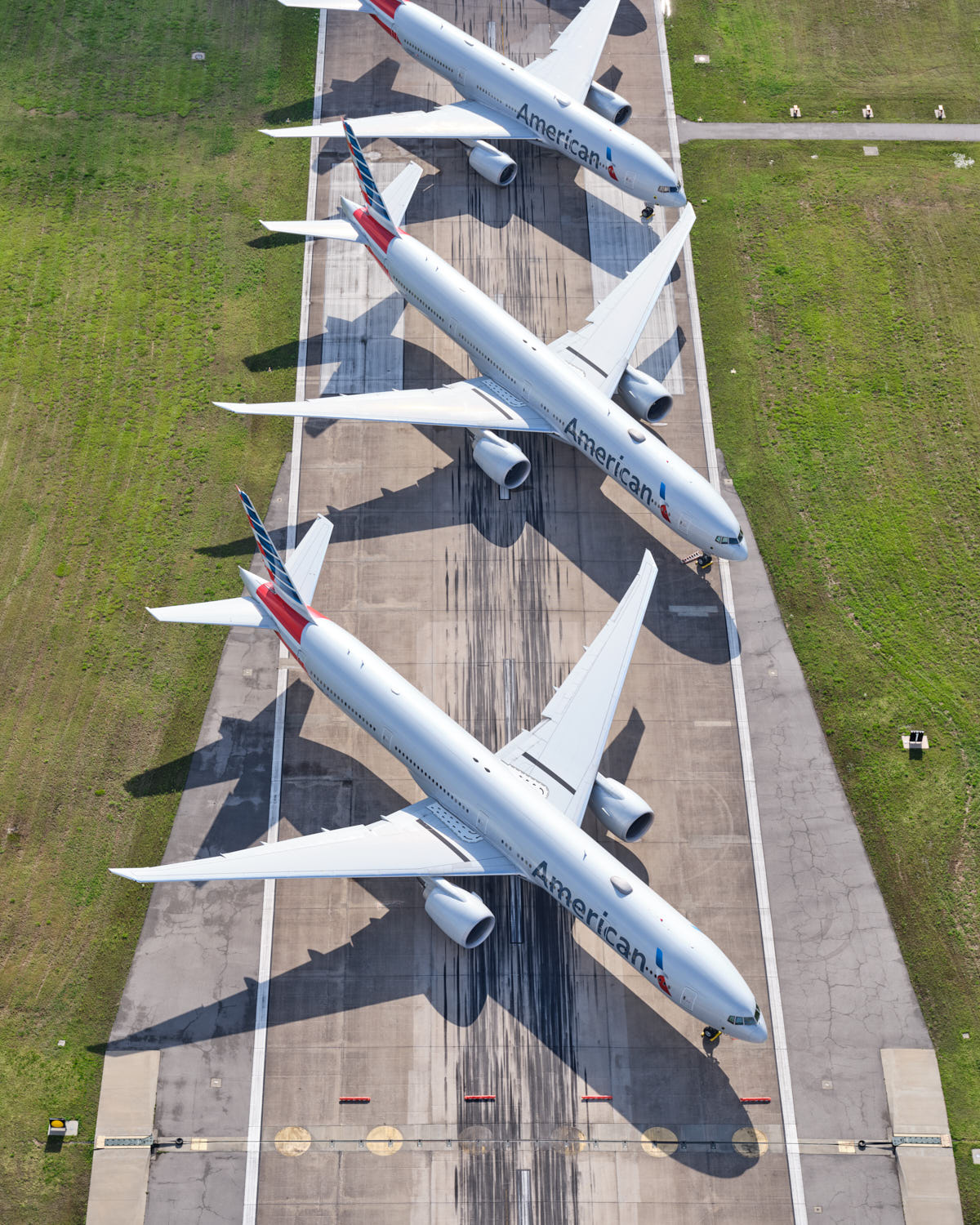


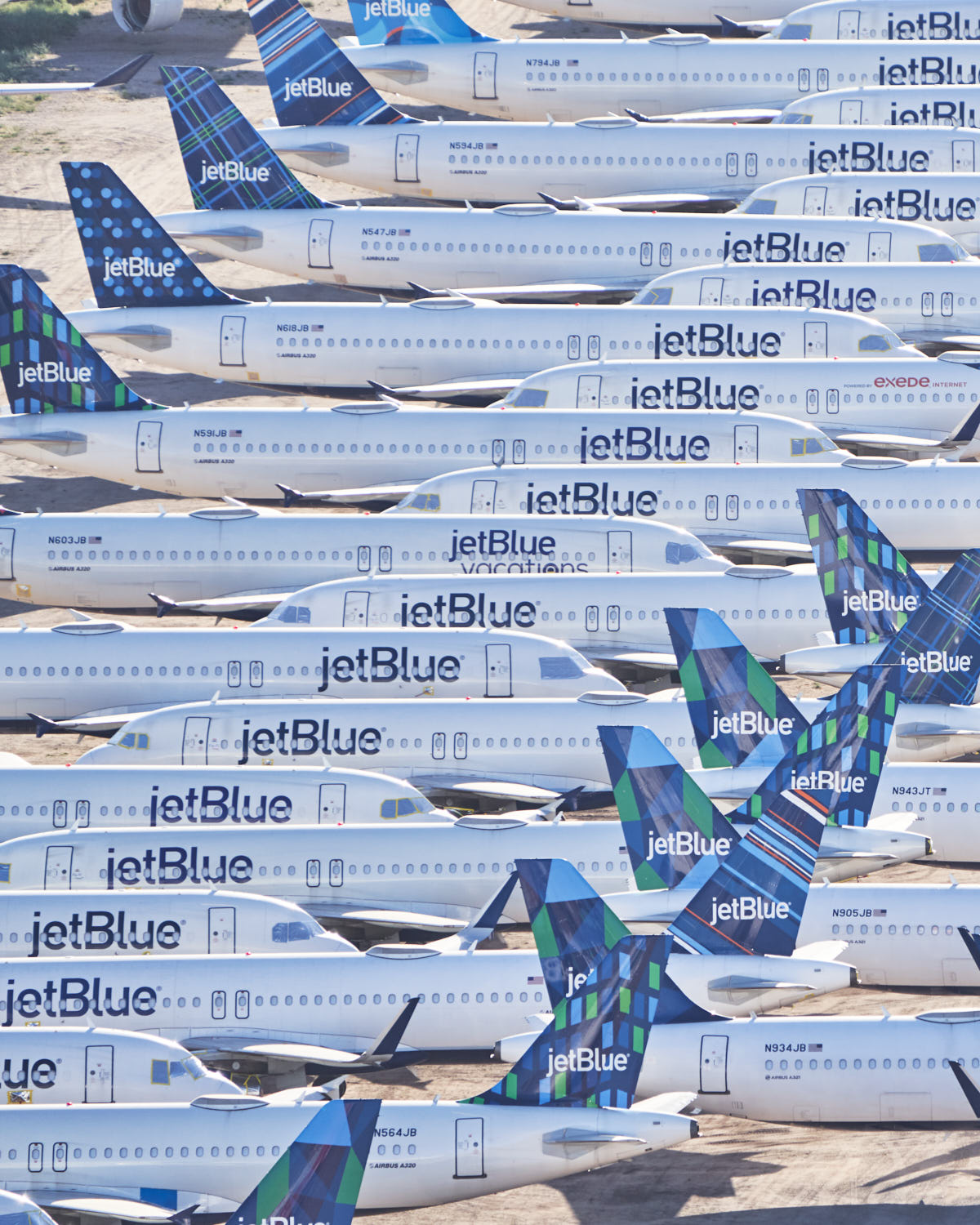
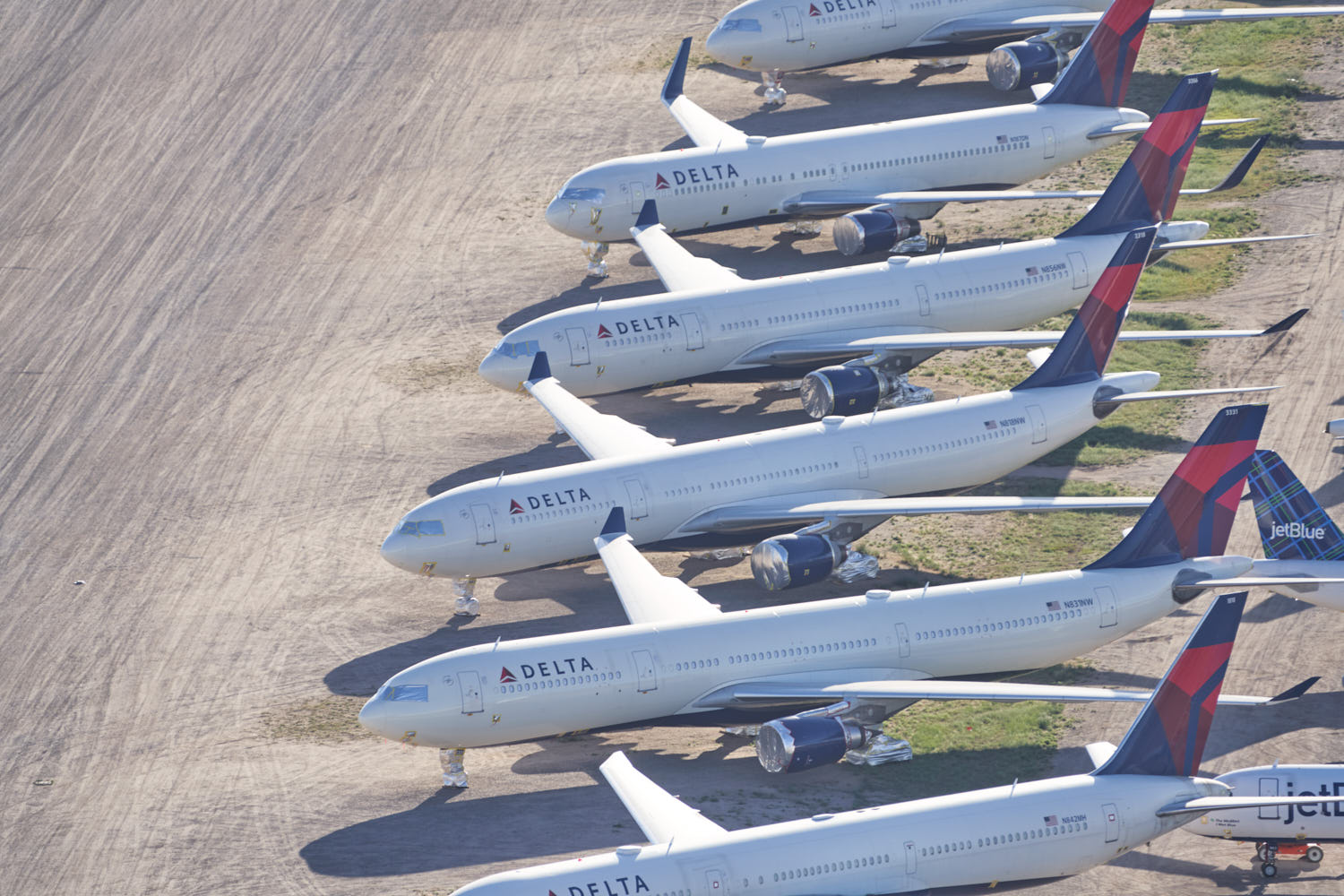
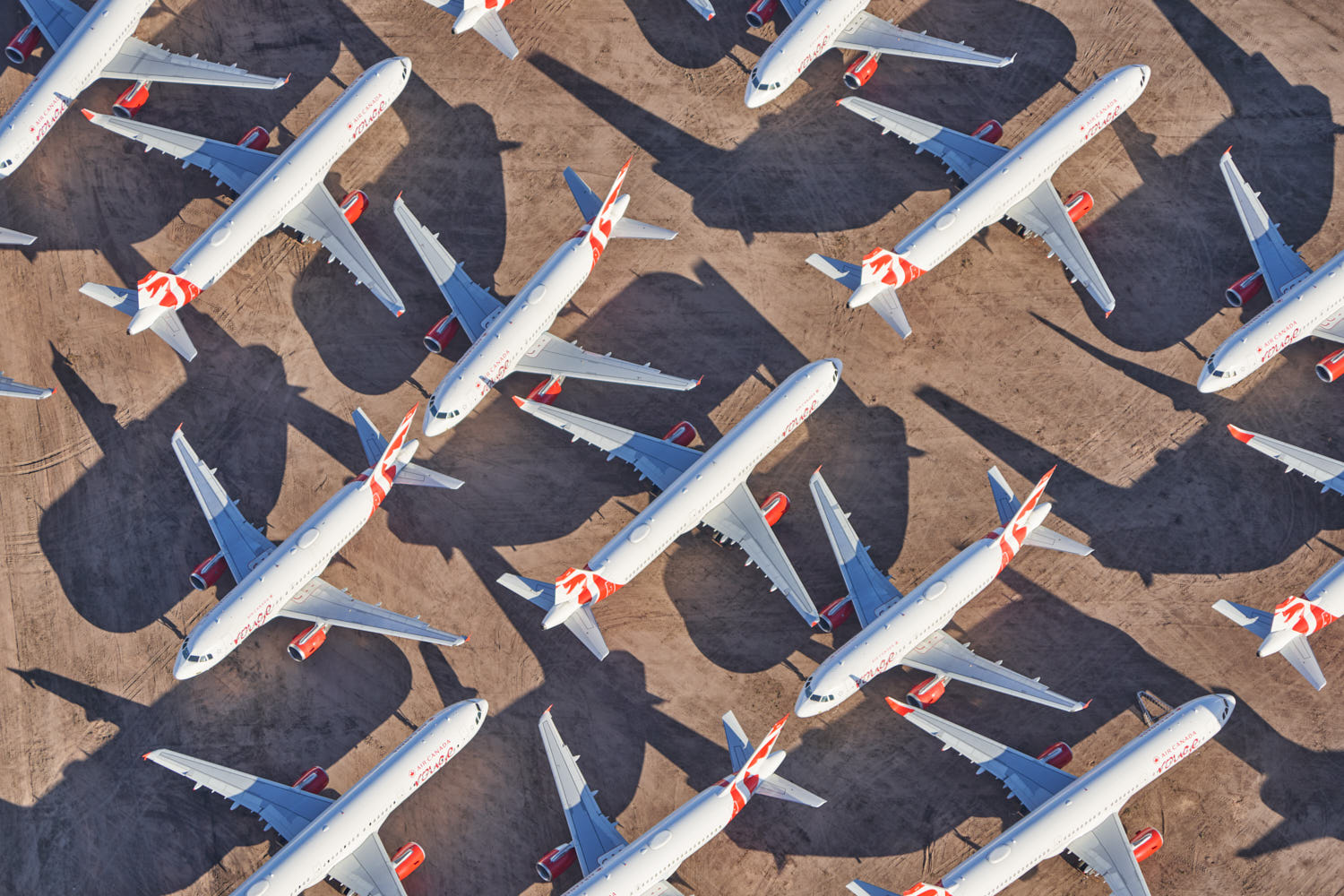

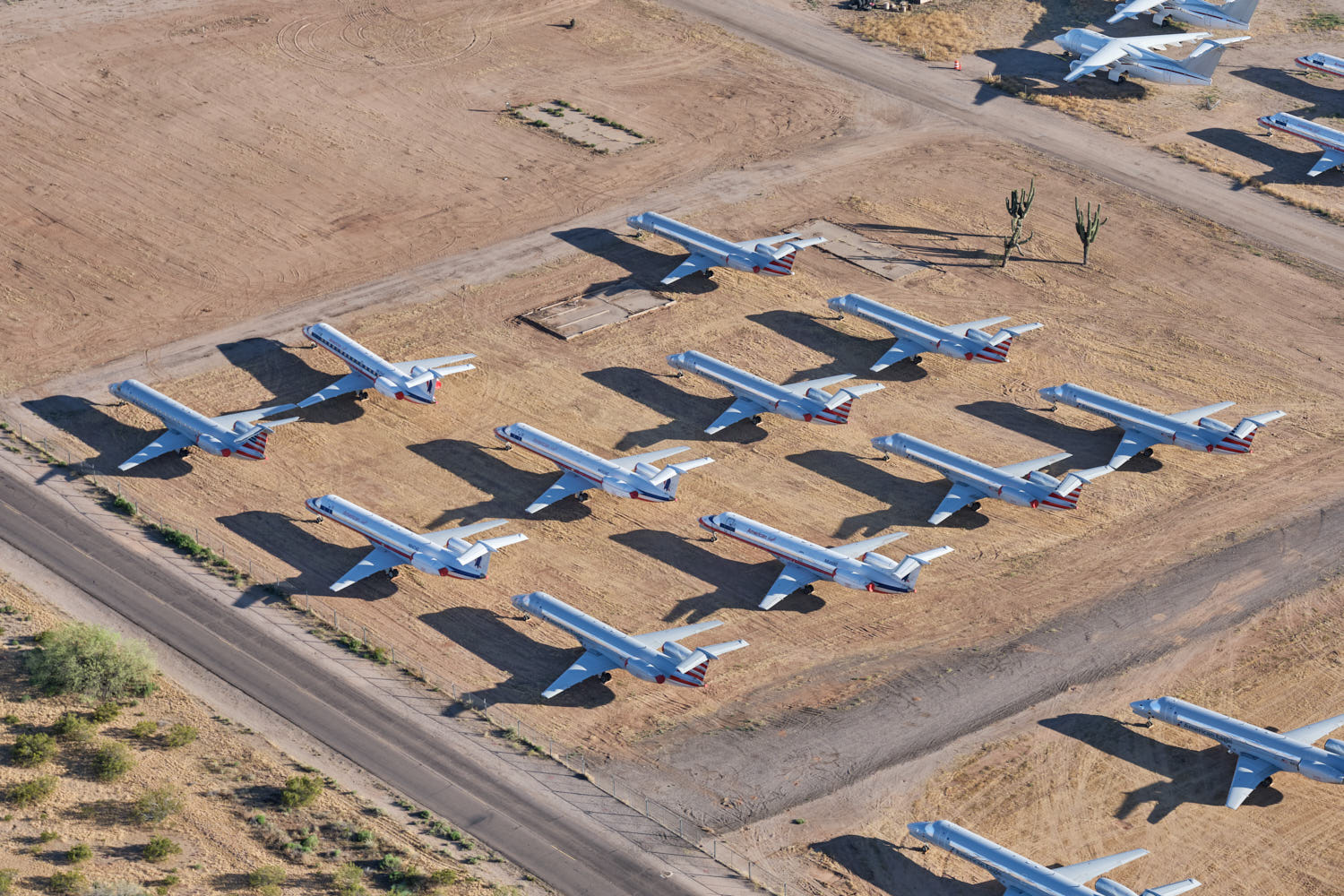

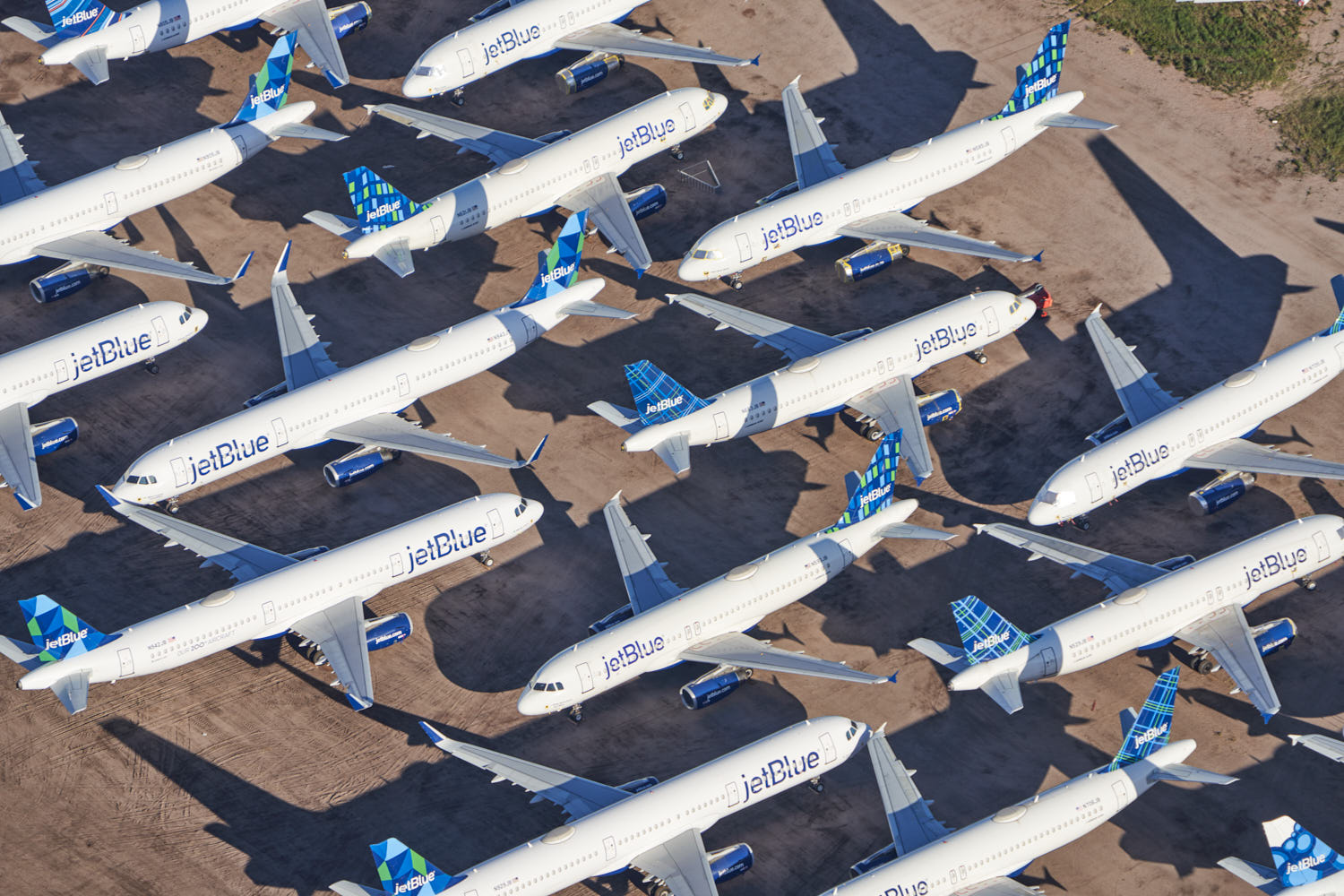
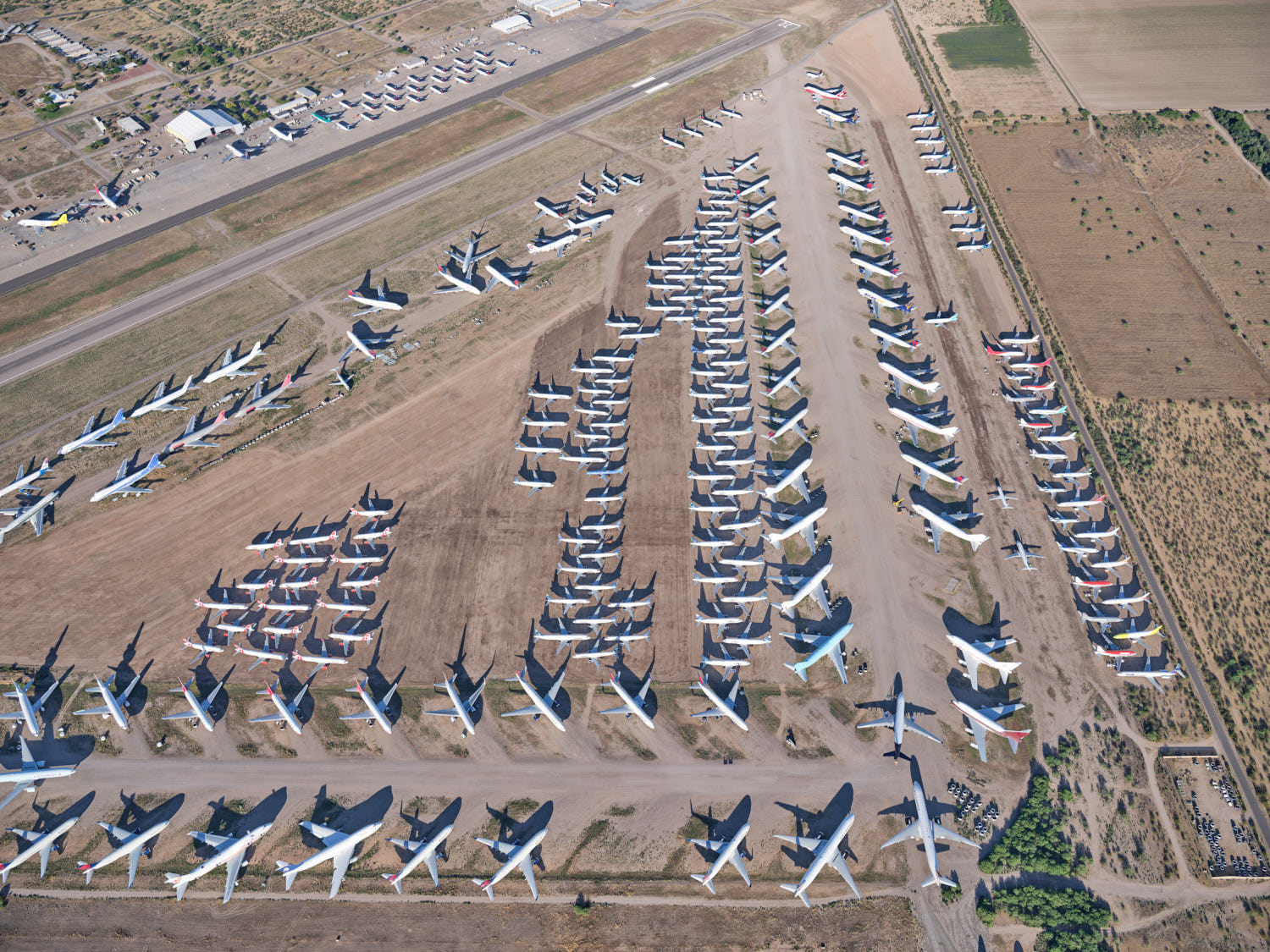
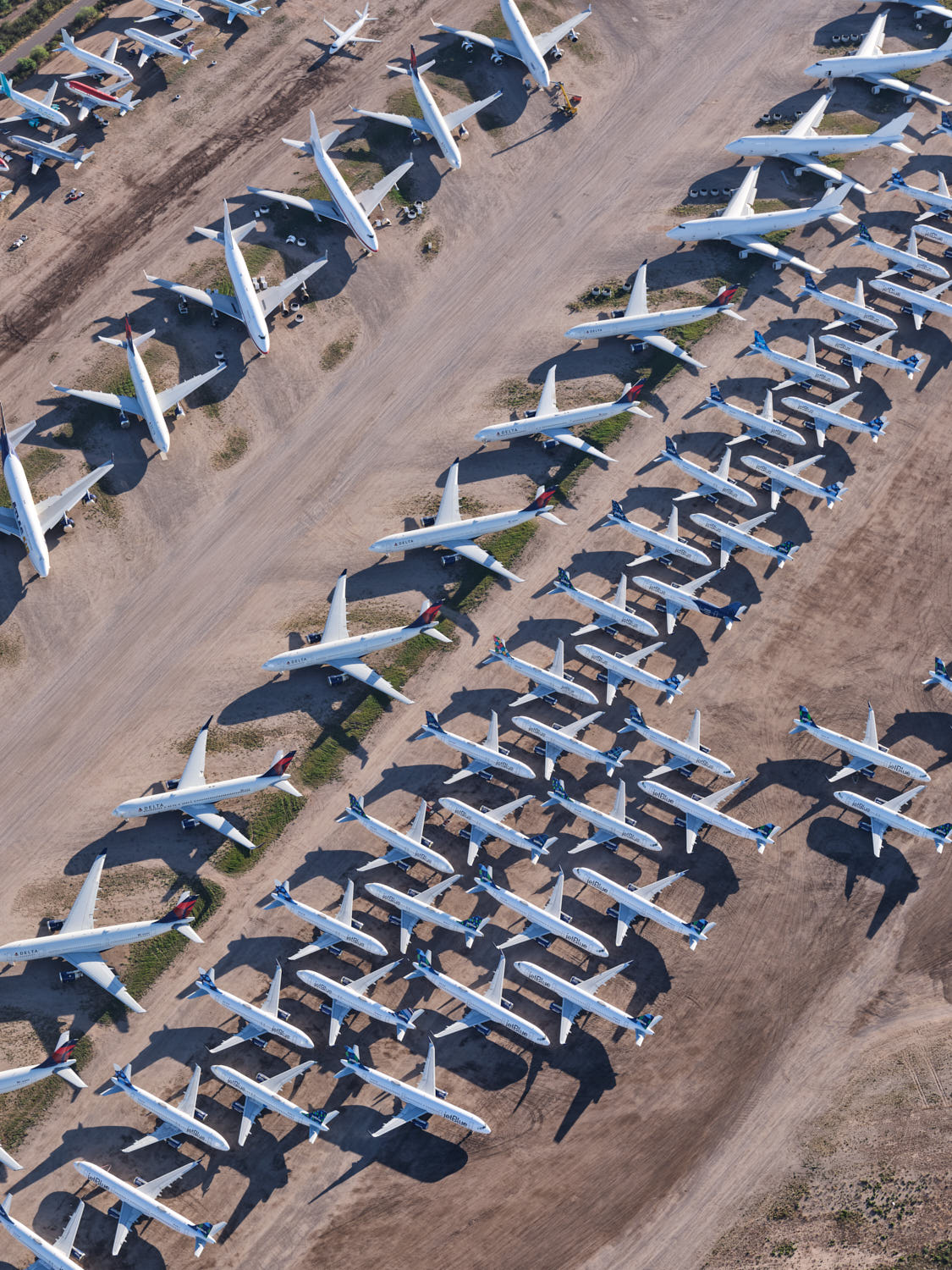

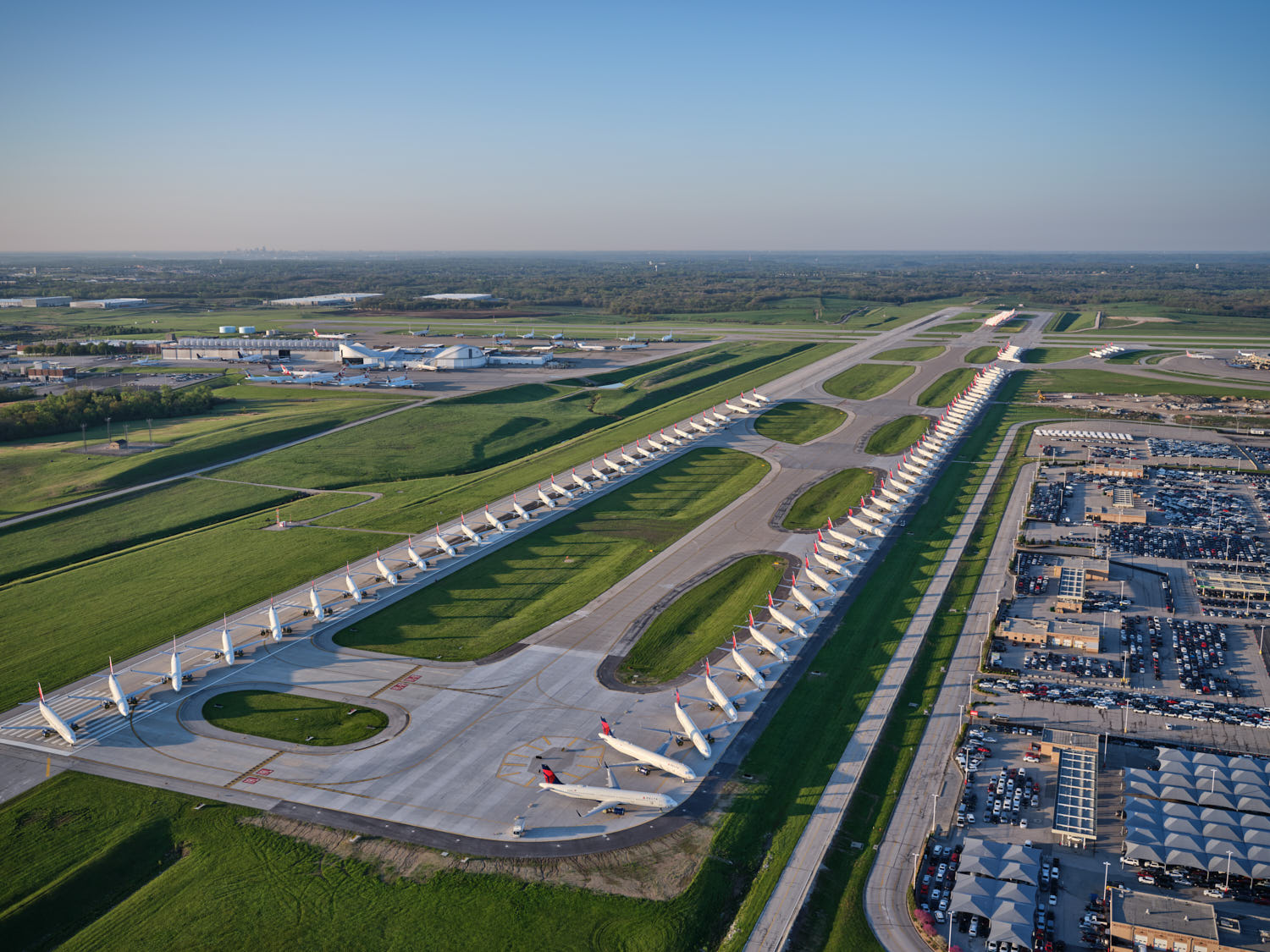
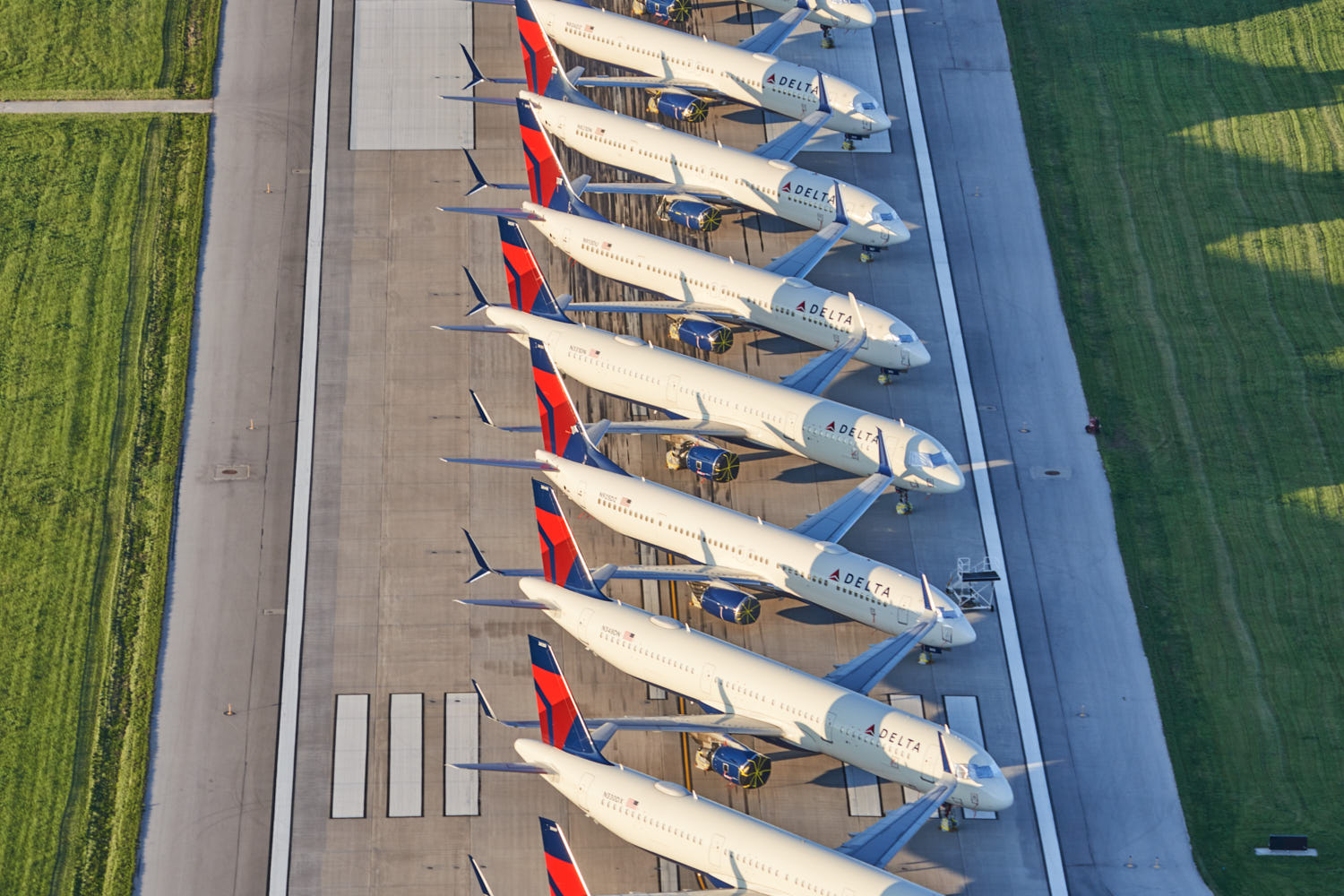
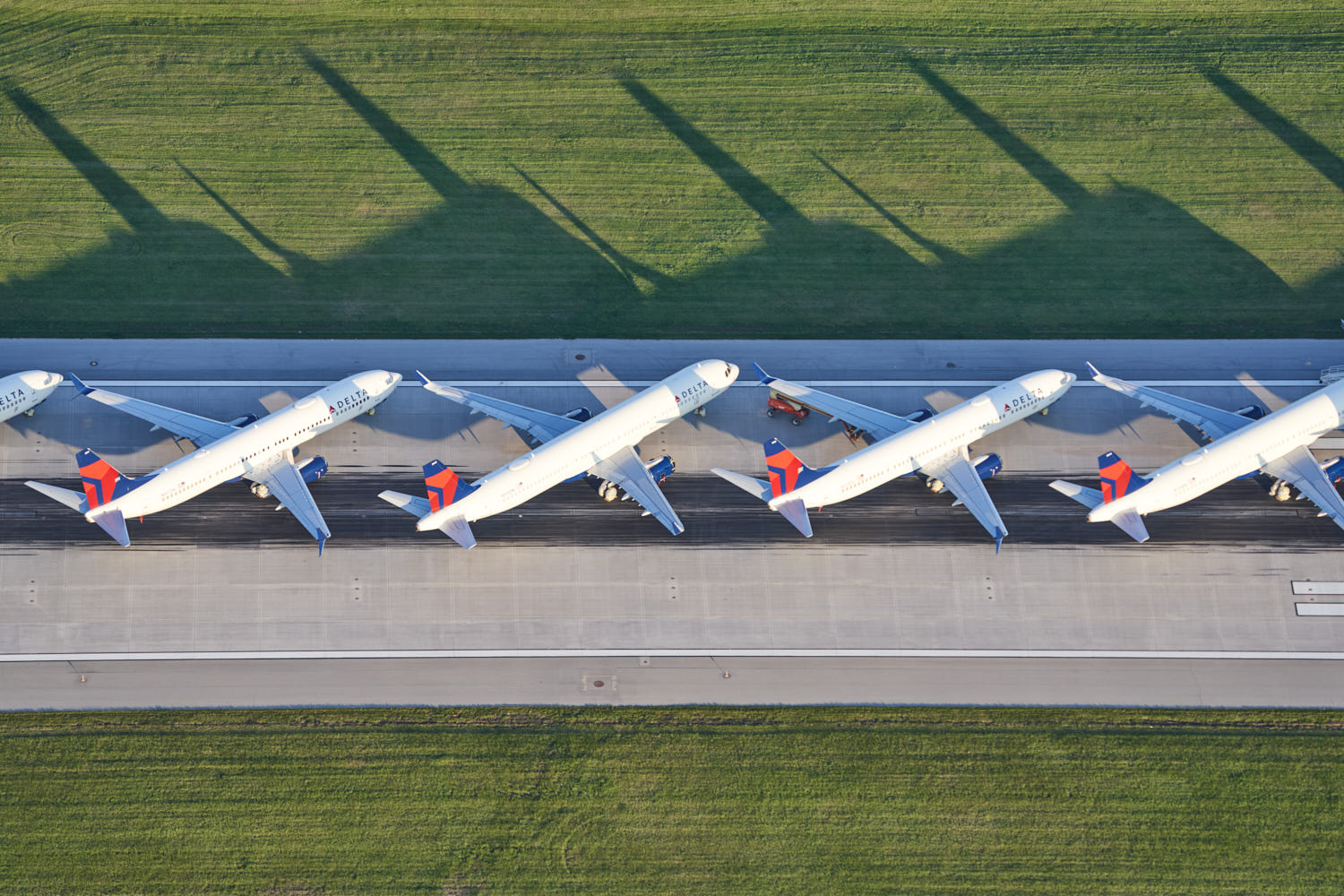


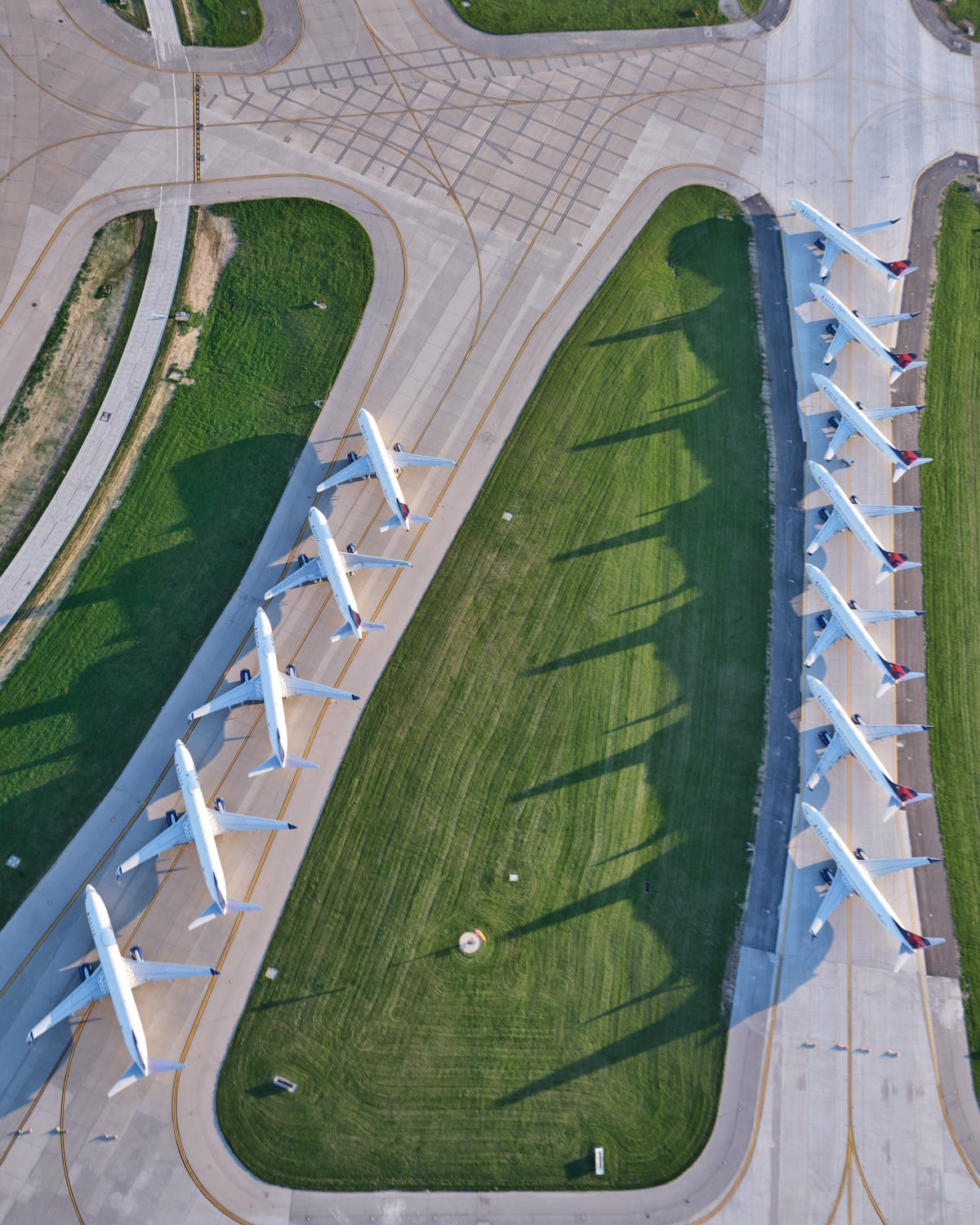



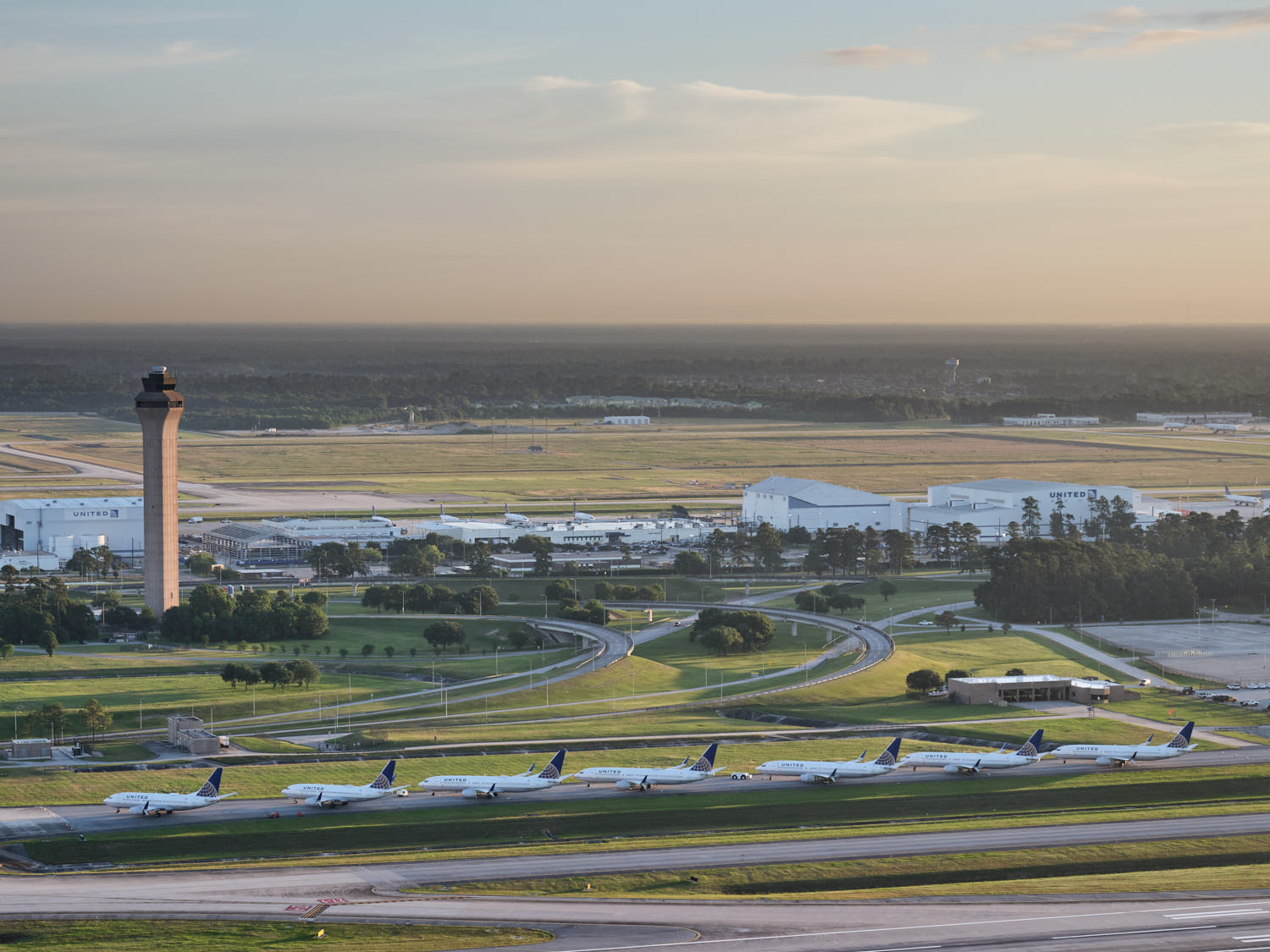
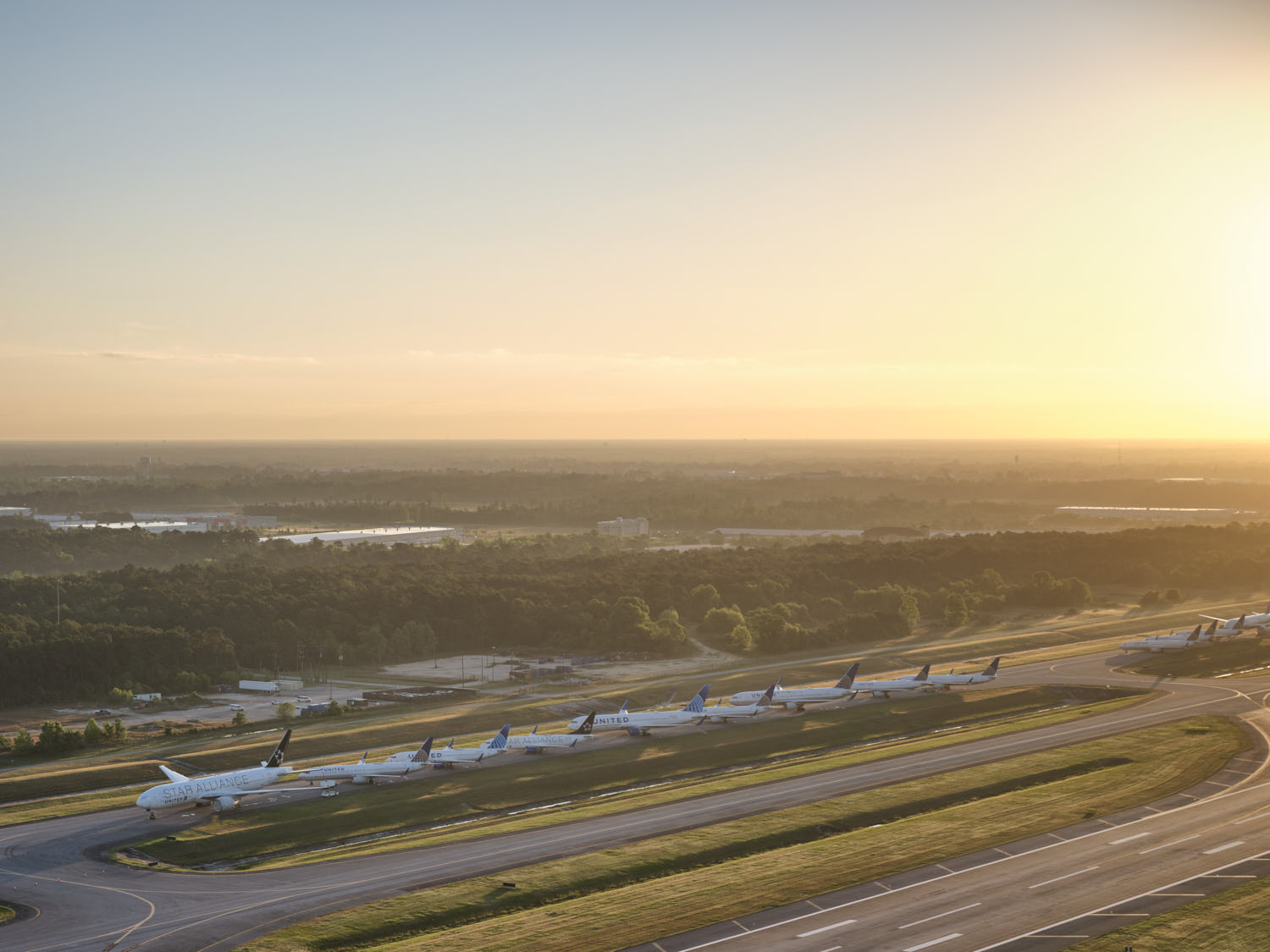




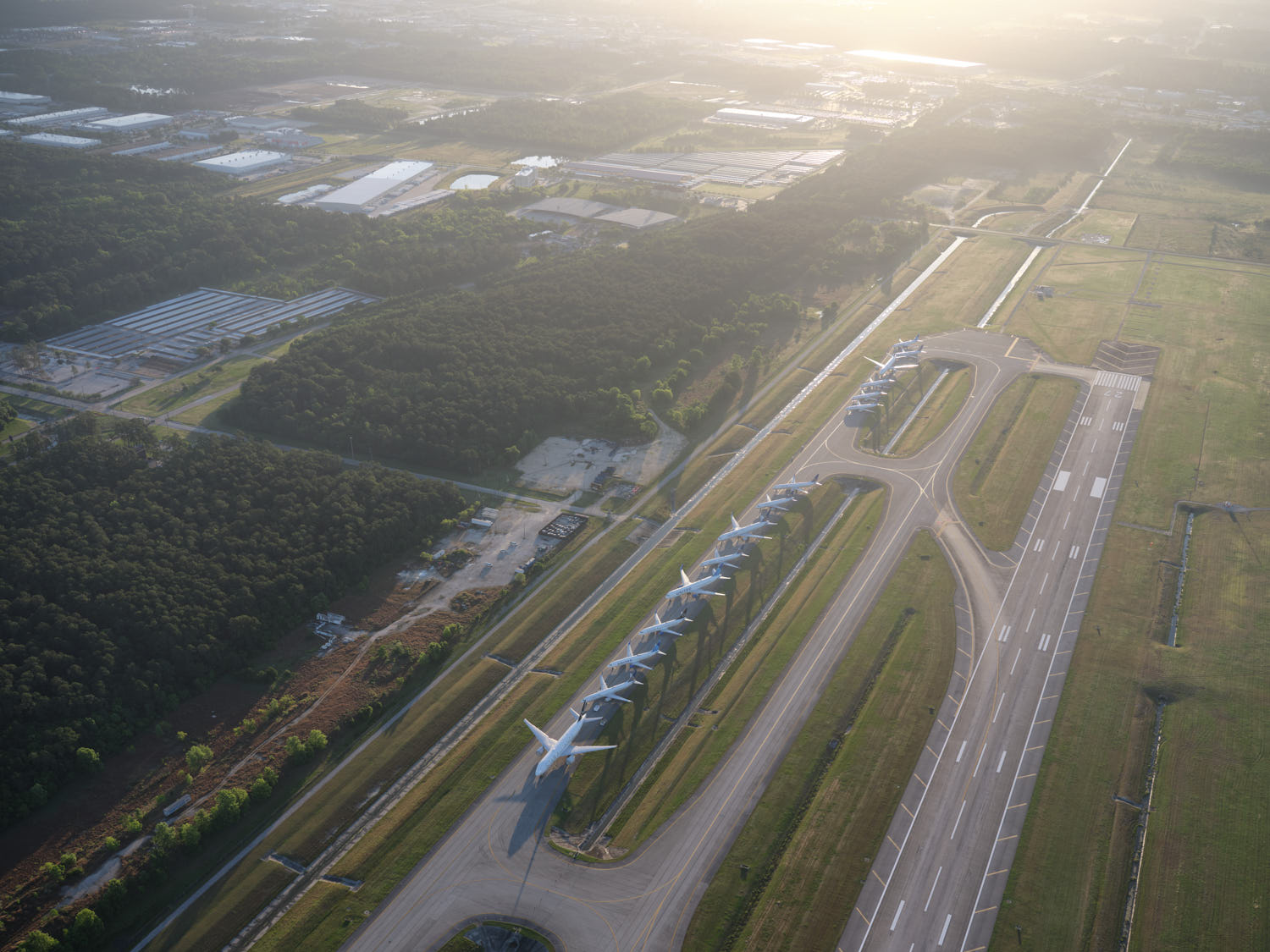



Incredible job here, Andy! You should be proud of this work and what you are doing to shed light on a dire situation.
Phenomenal work Andy! Enjoyed following along as you captured all these images and built this story. That’s some dedication right there to drive all those miles for these images.
Loved the pictures, but on an editorial note, Alliance (AFW) was not a precursor to DFW. I believe you are thinking about Meacham, Greater Southwest, or even Spinks airports.
Wow, can’t believe I’ve gotten that wrong all these years, thanks for letting me know, updated the post accordingly
My understanding is that Meacham was a WWII airbase which is why the the landing strip is so long. A 747 can land on it. It became a muni owned by FTW. Alliance was built some time after DFW by Ross Perot, Jr. with the intent of it being a cargo airport, not for passenger service. Prior to DFW being built on the Dallas, Tarrant county line to replace Love Field in Dallas, I think FTW had passenger service on some smaller airlines on and off possibly at Meacham, but not sufficient traffic to keep them.
DFW opened in 1974 and was created because all the airlines hated flying to Ft. Worth (Greater Southwest Airport) and then having to take a 15 minute flight to Dallas, (Love Field). However, it took many, many years for DFW to come about because neither city wanted to lose the bragging rights of having their own airport. After all those years the two cities finally settled on a compromise and settled on having an airport that was halfway between the two (18 miles from downtown to the airport for both cities). What is ironic is that it is just north of what use to be the Greater Southwest Airport which was Fort Worth’s airport at that time but was hemmed in by land constraints so it couldn’t get any bigger – 360 on the west side, 183 on the north side and Rock Island Railroad on the south side. The Center Port development is now where the GSW Airport use to be and Amon Carter Boulevard use to be the north/south runway and taxiway.
Alliance was created by Ross Perot Jr., as a freight airport only and didn’t come about until 1988. Official groundbreaking took place in July 1988 and it officially opened in December 1989.
Once DFW opened up all the airlines moved to DFW except SW because when it opened SW had just started operating and had never signed an agreement to move to DFW. There were several attempts to get SW to move to DFW not only by the airport, but also by the other airlines that operated there, namely Braniff. They were afraid of losing money if Love Field was allowed to stay open and SW was allowed to continue to operate there. The cites were also afraid that if Love Field stayed open, then then all the airlines would move back to Love and DFW would have been a waste of money. The airlines underwrote the construction of DFW and were afraid of losing revenue as it was so far away from each city. (When it opened it really was out in BFE), there was NOTHING else out there. DFW created the economic boom that then created the cities of HEB, Irving, Grapevine. Before DFW, they were just small suburbs and were still considered country.
SW won all the lawsuits but then the Wright Amendment came about to keep SW from flying beyond the 4 surrounding states. This kept the other airlines from moving back to Love Field and having to split their operations between the two airports. This in turn guaranteed that DFW would be the main airport for all airlines except SW to use for the DFW metroplex.
In addition, with AA moving their headquarters here in 1979, that set the stage for DFW to grow even more. When AA set up the hub and spoke type of operation that is the standard for most airlines today that fueled even more growth for DFW as it became the major connecting point for AA for their flying.
Once again, a huge undertaking resulting in a superb documentary, Andy. Well done, and thanks for sharing this chapter of airline history. There are a lot of opportunities out there to document what we have never seen before and,hopefully, not see, for much longer. We are living a history that will be discussed for generations to come.
If you could add a little of your camera info, for reference, it would be appreciated.
P.S. Just drove by Marana yesterday, most planes I’ve seen in our fifteen years living in the area.
I didn’t see one Southwest Airlines aircraft?
Most of the Southwest jets are over at Victorville. Unfortunately it’s really tough to find a helicopter operator near VCV without paying an eye-watering amount of money, so I passed on that one :/
Just FYI: There is a very interesting flyover video of the Victorville airport (showing the grounded Southwest aircraft) on YouTube.
I particularly enjoyed the following:
https://www.youtube.com/watch?v=zIbXai0l174
(ATTN: Mods: I hope that it is OK to post an external link; if not, please delete it and accept my apologies).
Thanks so much Paul, I agree that this is an historic moment and I’m glad I was able to cover it.
If you click on the images you can see some EXIF data but I used two setups for this series: the Sony a7rIV with the 200-600mm telephoto and my Fuji GFX100 with the 32-64mm for wider shots.
What you have captured here is primary history – not just aviation geek eye candy. Well done. Thank you for such a thorough, thoughtful, and beautifully photographed (as always) look at what we all hope is a rare perspective.
Very kind of you to say Doug, thank you!
Great work! Amazing photos of a temporary situation in aviation history. Us and those birds will take to the sky once again!
Thank you!
Stunning photos!
Andy, this is a great piece. It shows how much equipment is in the air at any one time under normal circumstances. Which we all know drives the bottom line in terms of how fast an airline can turn the capital.
And man, imagine the ground crew… some guy (a bunch of folks, really) driving a tow around a quiet airfield, parking all those suckers and walking away. A bitter task done with pride.
Lots of people would like to see this. We’ll share it for sure. Well done.
Thanks so much Stefan. The aviation industry involves so many moving parts, it was so strange to see those parts not moving :/
Truly epic photojournalism! Thank you for the effort so that people like us have a chance to experience this.
I appreciate it Scott and hope it gave you a new perspective
These are incredible – thanks for sharing and the commitment to get these shots!
Thanks for the kind words Ricky!
Congratulations on capturing such incredible images in this historic time, and thank you!
I wish they didn’t have to be taken but it was an honor to take them nonetheless, thank you!
A great story. Truly one we will be talking about for generations. The pics are awesome and gut wrenching as well.
Thanks David!
Absolutely amazing photos! I was so taken and captivated by them and yet so sad at the same time. Brought a few tears to my eyes. I hope we don’t have to see this again though. Thank you for taking the time do these! Would have gladly shared the costs with you! I hate to see the retirement of the 767/757 fleet. What a joy it was to fly on them over the years. The many 757 flights on AA into and out of KJAC were truly something to experience! Thank you again for your time and efforts!
Great work! Thank you for getting these incredible images of American Aviation in covid-19 pandemic. They are very important documents in our history and for generations to come! Thank you !!!!!
Fantastic photos! Makes me wonder how many more aircraft are now being stored in the Mojave Desert boneyard and Victorville area in California. That one is even larger than the boneyard outside Tucson.
Will be sharing with lots of fellow travelers (a positive term these days). Perfect way to bring home the magnitude of this great international deep breath.
These pictures really put COVID-19 impact into clear perspective. Not taking away from loss of life or human toll, the pictures made me think of all of the people who would be flying these plans, or supporting them, now sitting idle. They also made me question; how do you restart? Think of all of the things that must happen before each aircraft is again in flight? Just the number of flight crews needed to reposition the aircraft to accommodate flight schedules.
Who is really flying now, check this link out.
https://flightaware.com/live/
Speechless..! Awestruck !
This a new dimension to your fine talents.
The pictures tell a very sad story in a beautiful way.
The JetBlue photo is the best. You should contact them; it would make a beautiful shot for an ad or the cover of the magazine
Your photos are fantastic. Apart from the symmetrical patterns is the implication of such a large amount of equipment not being used. I think that the vast majority of comm planes are owned by large investors that are in the leasing business, not the flying business. Really unbelievable when you consider the billions of dollars in these planes that are sitting idle. And they need continual maintenance. No doubt the lessors expect the rent to be paid if they are used or not. 9-11 was nothing compared to this in terms of the financial consequences to the airlines and aircraft owners.
Great historical photos..They will fly again !
My wife and I went to Bush IAH a few weeks ago and saw them lined up along the taxiway in a few spots all bundled up and taped with plastic over engines and gear.
My parents and uncle were all part of the beginning of America Airlines, I was born on a layover 73 years ago, It bring tears to my eyes to see so many parked planes around the system. There will be some tough times ahead, but the same spirit that pioneered the world of flight is not parked, only the airplanes. They will fly again!
I find it both an honor and a privilege to view this historic moment you captured. I find there are two strong types of history. One is happiness, the other is sadness. This sadness has brought tears to my eyes.
Sobering, but bad ass article.
The way you captured these grounded planes and told the story through pictures and words – incredible. I’m an avid traveler, too, and an airplane fanatic, so this made me sad but also hopeful. Thank you for the time and effort you put into this!!!
Andy, thank you for this beauty in the midst or tragedy. Well Done! I haved shared a bit.
Andy, thanks for your overview of the American situation, the enormous volumes focus the attention, i am currently in the UK and I am looking forward to returning to West Australia, this world makes us cynical and when you consider the enormous investment by Emirates, Qatar and Etihad, much of the hardware photographed could be carrying different livery going forward or perhaps the current lock down promotes paranoia, happy to be wrong!
Every airline has grounded over half of their fleets. AA, SW, DL, UA have all parked more than half of their fleets and cancelled almost their entire international flight schedule, so all those planes had to go somewhere. AA only flew 30% of their schedule in April and for May is only flying 20% of their schedule. In Europe, some have parked their entire fleets waiting out the pandemic. Easy Jet has grounded their entire fleet, Virgin Atlantic has grounded 35 out of 41 planes. British Airways has also grounded more than half their fleet. Ryan Air which is the biggest carrier in Europe has cancelled 90% of their flying.
What’s even more discerning is that a lot of the planes are parked on runways – NOT taxiways. TUL, MCI are both using runways to park the excessive amounts of planes. SLC is probably the same, but I haven’t been there since the pandemic hit. DEN has a lot of planes sitting on taxiways, too.
DFW has shut down the west side of the airport because there just isn’t enough traffic anymore for both sides to be open. Before the pandemic, AA alone had over 900 flights a day there, not counting American Eagle operations. So over 1800 aircraft movements, 1 takeoff/1 landing.
amazing, once-in-a-lifetime (hopefully) photos … and you mentioned two of my favorites – tucson and prada marfa!
Great photos for the Commercial airlines, will be looking forward with HOPE and JOY when MOST of these PROUD BIRDS will fly again.
Would like to see something done on MILITARY AIRCRAFT also if possible, know that it would be much RED TAPE to go through to be able for that to happen.
KEEP UP THE GOOD, GREAT WORK.
Carl Krone
Phenomenal ! Really puts perspective on the times. Please pursue creating a PBS or History Channel documentary. You have captured history! Thank you for sharing.
Andy, did you notice that more of the jets like 757,767,330’s were parked in AZ and CA since the airlines were anticipating retirement or were they just just sticking a/c wherever they could find space?
How do the crews that fly the jets to these locales get home?
Hi Andy,
I saw this blog posting on Business Insider and was taken by your photos. Your images are beautiful and serene despite the planetary-scale pandemic.
I’ve always gotten an odd thrill from air travel and airports that seems a little above the average, even though I know nothing about aviation. I do enjoy art though, and was wondering if any of your images are available anywhere for sale as art photography? (If not, that’s fine, but I think these images will eventually belong in a gallery, exhibition or museum.)
Thank you for the unusual viewpoint.
Andy: Thank you for your great post. The images are absolutely wonderful!
Andy – I’d really like to see a photobook of this. Is that something you have considered?
Sooooo not happy with you right now, Andy, because you ended up bringing a lot of tears to my eyes… from seeing all of these pictures and reading your fabulously written story. It’s truly a sad tale, but you certainly did it justice.
I love that you included the emotionally moving quote from CEO Carty after 9/11, as well as your inclusion of the repeated statement that “these jets will fly again.”
Thank you for all of your efforts and for sharing.
Andy: Good job of highlighting a very sad situation we find ourselves in. I have flown aircraft for over 40 years & it makes my gut hurt to see the realization of these beautiful machines sitting idle & knowing that some will never fly again! R. D. Marsh
Andy,
Thank you for sharing a view that many of us in the airline industry would otherwise never see. As I looked at the way the air crafts were parked to maximize space it made me think of how I have laid out face mask patterns to be able to get the most out of a piece of fabric. For the first time during this crisis, I cried.
Kay F.
Hey Andy
What a fantastic work, those pictures, while sad, are just amazing! Followed your IG and was already wondering what you were up to, now I know 😉
Is it possible to buy one or several of these pictures for private use, i.e. hang them in my newly renovated room?
Cheers,
Benedikt
Thank you for your kindness. With AA for 27 years and it is heartbreaking. We look forward to serving you soon.
Awesome writing and pictures Andy!